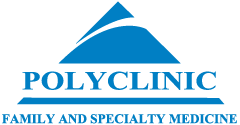Reminder List:
- Must bring a VALID HEALTH CARD and ALL MEDICATIONS currently taking.
- If Health Card is not valid or expired, uninsured visit charge(s) will apply.
- Must bring a translator if the patient cannot speak English
- Patients who wish to RESCHEDULE or CANCEL their appointment must do so at least 48 business hours in advance to avoid a NO-SHOW fee of $113.
Videonystromagraphy (VNG) Testing
The assessment and the tests are carried out by Vitaly Kisilevsky, an international medical graduate specializing in otolaryngology (ENT). Vitaly Kisilevsky completed a clinical and research fellowship at U of T in medical neurotology and otology. Currently, his focus is conducting Neuro-Physiological Vestibular Evaluations. His assessment of MVA clients provides objective evidence of traumatic damage to the balance system and is relevant to cases of head and neck trauma, musculo-skeletal and neural system injuries and post-traumatic disorders.
A VNG tests the oculo-motor, positional and caloric responses of patient’s inner ear. The test is looking to determine if vestibular disease is affecting the inner ear which may be causing the patient to feel unbalanced or dizzy. VNG Testing is non-invasive and the safest, most accurate and most comfortable way to test for Vestibular Disease. Additionally, this is the gold standard test that can differentiate which ear the disease is affecting.
Description of Test
This is a four-part test that should take up to 45 minutes to complete.
The first part, patients will be asked to follow a moving object with their eyes. Eyes movements will be evaluated for slowness or inaccuracies following moving objects.
The second part of the test, patients will be asked to follow a large, fast moving objects while eyes movements will be evaluated for asymmetry or imbalance.
The next part of the test, the doctor will move patient’s head in various directions looking to see if there are any abnormal eye movements in different head and body positions.
The final stage of the test involves stimulating patient’s ears by using air caloric stimulation and tracking eye movement while ears are stimulated. This will help determine which ear is being affected by vestibular disease.
This is a completely safe and non-invasive test.

